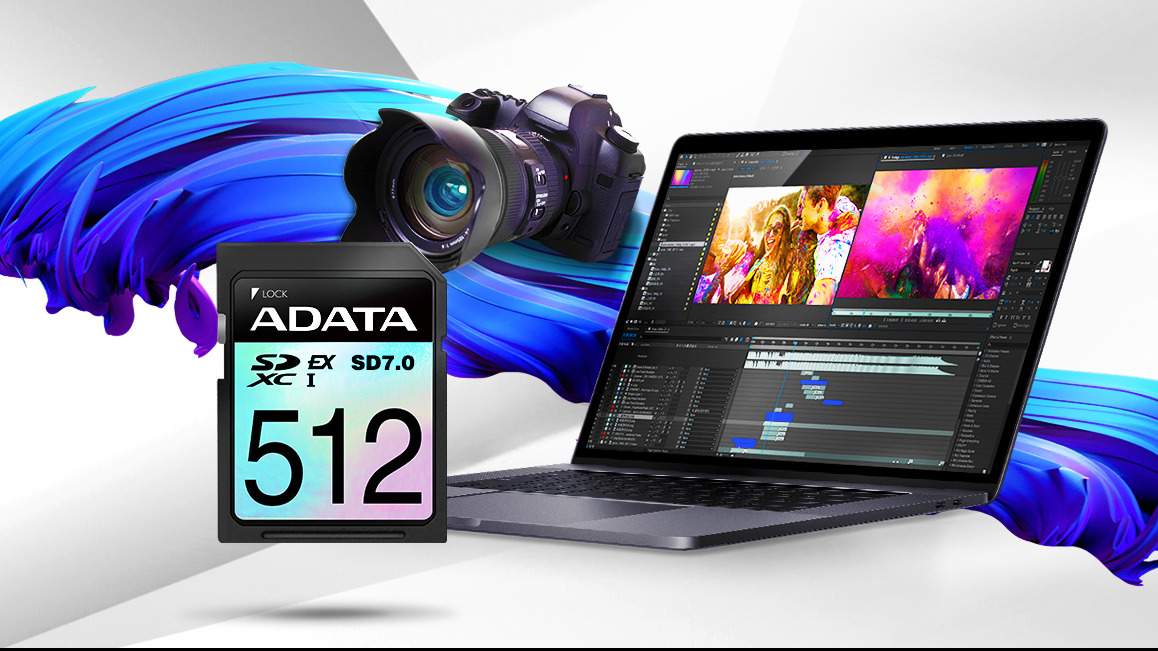
Adata has unveiled what it claims is the industry's first SD Express 8.0 compliant card, boasting read and write speeds of 1.6 GB/s and 1.2 GB/s, respectively. These numbers are up to twelve times faster than existing UHS-1 solutions, four times the speed of UHS-II, and even beat out several entry-level NVMe SSDs. The Premier Extreme SD 8.0 Express memory card will debut with a single 512GB storage option, but we're likely to see higher-capacity offerings spring up as the technology and market matures.
The SD Express technology was introduced back in 2018, with the SD 7.0 standard. However, we're only seeing these superfast cards become a reality now, in 2025, largely due to the Nintendo Switch 2. SD Express cards function a lot like the SSDs in your PC/PS5/Xbox, utilizing PCIe lanes and the NVMe protocol. Even entry-level SD Express cards are rated for a theoretical maximum bus speed of 985 MB/s (PCIe 3.1 x1). This number gets progressively higher, with PCIe 4.0 x2-based cards capable of hitting 4 GB/s under the SD 8.0 standard.
Adata's Premier Extreme lineup is being expanded with an SD Express 8.0 option, featuring a PCIe 3.0 x2 interface, advertised with read and write speeds of 1.6 GB/s and 1.2 GB/s. Despite the impressive claims, keep in mind that the card's U3 and V30 ratings only guarantee a minimum sustained write speed of just 30 MB/s. With its 512GB capacity, the Adata Premier Extreme SD Express offers built-in LPDC ECC technology and support for multi-device simultaneous access.
SD Express card ratings
SD Express cards have their own speed rating indicated by an 'E' and a number. For example, E150 on an SD Express card means you're guaranteed a sustained write speed of 150 MB/s. The majority of SD Express cards currently available in the market have not been specified with these ratings, falling back to the traditional U3/V30 speed class.
Sadly, these cards won't find much use outside the Switch 2 and professional video gear, as almost all smartphone manufacturers have abandoned the concept of expandable storage. Implementing SD Express in phones would mean adding a unique connector and sacrificing a few PCIe lanes off the SoC. So, we'll probably be stuck with internal non-upgradeable UFS and NVMe (iPhones) storage for the time being.
Similarly, MicroSD Express cards are not cheap, costing up to 25 cents per GB, compared to retail SSDs, which can be had for 5-6 cents per GB. Given that both are based on the same NAND flash storage technology, the cost of SD Express based memory cards is likely to decrease over time. Adata has not specified a price or a release window for this memory card, but we expect to hear more at Computex next month.







